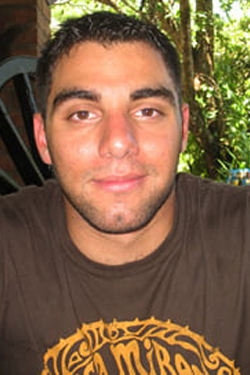
My name is Jacob Sahakian, and I participated in the NSF-REU internship at Oak Crest during the spring 2007 semester. I had the privilege to work on the pyoverdine siderophore project with Dr. John Moss and Dr. Marc Baum, which was very rewarding.
I am currently working in the lab of Dr. Marcus Horwitz at the UCLA David Geffen School of Medicine. We are generating novel vaccines to target the pathogens Mycobacterium tuberculosis and Francisella tularensis. According to the Center for Disease Control and Prevention, every year, over 9 million people worldwide become sick with Tuberculosis (TB). The only vaccine currently available is the Bacillus Calmette-Guérin (BCG) vaccine; however, it is not administered routinely in the United States because protection is incomplete and because it can interfere with diagnostic tests for TB. Our lab is developing recombinant versions of the BCG vaccine that express antigenic proteins of M. tuberculosis and thereby induce a stronger protective immune response against M. tuberculosis than BCG.
My project relating to TB involves developing a booster vaccine for people previously immunized with BCG or, in the future, with a new generation BCG vaccine. Some of the booster vaccines are recombinant strains of different microorganisms from M. tuberculosis that are of low pathogenicity for humans but, like M. tuberculosis, multiply inside human white blood cells. We insert genes by means of conjugation plasmids into these nonpathogenic organisms to obtain vaccine strains that are expressing antigenic proteins endogenous to M. tuberculosis. Since both the recombinant vaccines and M. tuberculosis reside intracellularly, the recombinant proteins expressed by the vaccines are more likely to be processed and presented to the immune system as though they came from pathogenic M. tuberculosis. This vaccination approach should provide a safe method for introducing M. tuberculosis proteins to the immune system and stimulating an effective immune response to prevent infection with the pathogen. We use mouse models of infection to test the efficacy of the vaccines.
By working at Oak Crest for a semester, I understood the amount of time and dedication that is required of scientists to advance a project. I learned to accept that things don’t always work and the results you desire often don’t match up with the results you obtain. However, when you do get positive results, it is very fulfilling. By attending the group meetings held by the researchers at Oak Crest, I learned how scientists think, question data, and seek answers. By presenting in group meeting, I became more comfortable with my scientific knowledge and my abilities to pass down information to my colleagues, even though most of them are more highly educated and experienced than myself. Overall, I had a great time while at Oak Crest and am very fortunate to have had such an experience as an undergraduate.
